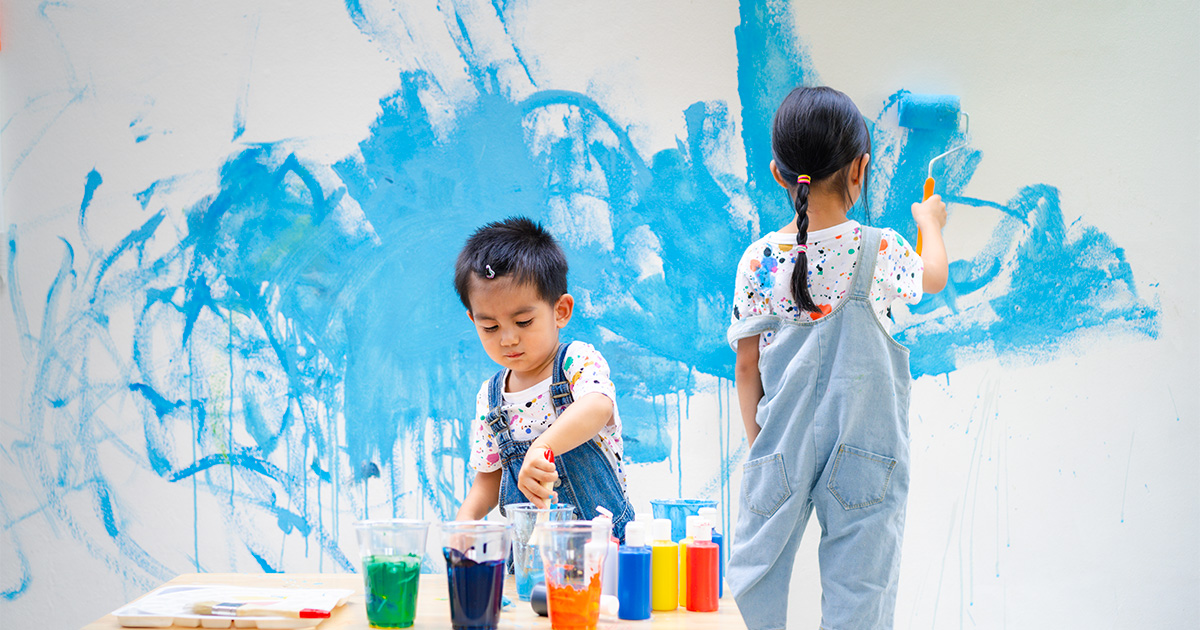- 844.422.9533
- Schedule a Tour

Open-ended play and experiences give children the opportunity to make connections between themselves and their surroundings while experimenting and exploring the world around them.
Creating these experiences can be as simple as providing children with open-ended materials while playing. Materials can include blocks of different sizes, baskets, boxes, balls, chalk, paper, playdough, textured fabrics, and even outdoor natural materials.
Let Their Creativity Flow
Open-ended materials are those that don’t come with instructions, meaning there is no right or wrong way to use them. This allows children to use them in endless, creative ways using their imagination as a guide. For example, a block can be used to build a house one day and become a microphone to sing a favorite song the next.
When introducing open-ended materials, creating and playing alongside your child can spark ideas of how to use them. Leaves and sticks found during a family walk might be used as paintbrushes to create a masterpiece when a child arrives back home. You can model a way to use these materials by dipping a stick in paint and dabbing it on a piece of paper to create one or two dots. Allow them to continue creating on their own by making additional marks. Extra inspiration can be given through books and photos to guide their ideas and spark their wonder and curiosity.
By letting children use materials freely based on their own creative thoughts and ideas, we are empowering them to be creative while promoting critical thinking skills.
Engage in Conversation
As children engage in open-ended experiences, join them! This is a great opportunity to get down on their level and have fun while asking questions and talking to them about what is happening. This also shows children how they can engage in meaningful conversations with others.
We can take these interactions a step further by asking open-ended questions, which allow children to use a wide range of vocabulary instead of a simple “yes” or “no.” Some questions we can ask to guide their thoughts are:
- “I wonder what would happen if …”
- “What do you notice about ...”
- “How might you do it differently?”
- “What do you think will happen next?”
- “What makes you happy?”
- “Tell me about it”
Listen with Patience
At first, children might not answer these questions right away. Letting them take their time to think and answer shows that you are genuinely interested in what they have to say and that their voice matters. To extend their learning, repeating what they are saying and adding extra information and new words can keep a child thinking! This continues building a rich vocabulary and makes them feel confident when expressing themselves.
Open-ended experiences instill confidence in children as they experiment with different ways to use materials or complete a task. While trying something new, a child can problem-solve and try out a new idea without the pressure of being right or wrong. This supports a positive attitude toward lifelong learning!
